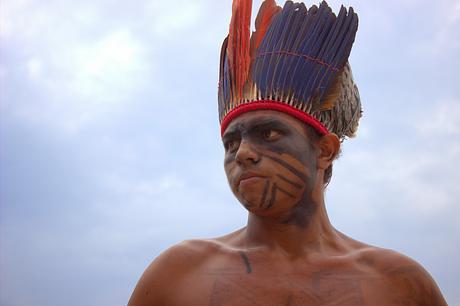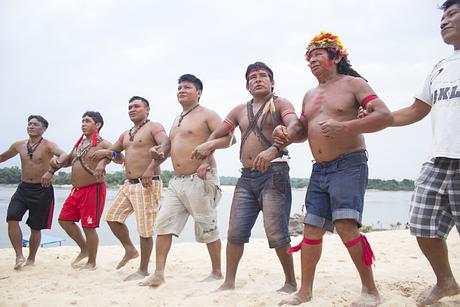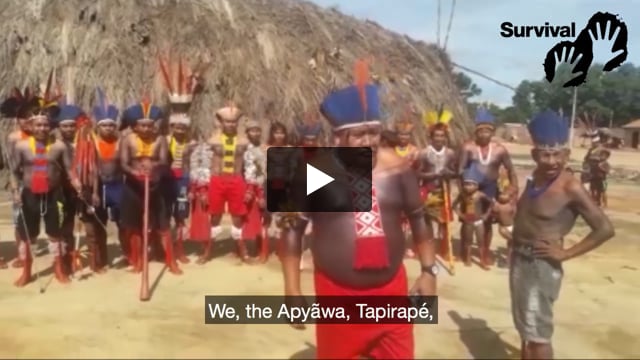Brazil: Munduruku Indians strike back against dam danger
December 4, 2014
 © Maíra Irigaray/Amazon Watch
© Maíra Irigaray/Amazon WatchThe Munduruku tribe has embarked on a landmark mission to map out its ancestral territory in the northern Brazilian Amazon, and prevent its destruction.
The Indians are protesting against a series of dams due to be built on the Tapajós river and some of its tributaries, illegal mining and logging on their land, and the government’s failure to protect their forest.
For the Munduruku, who number approximately 12,000, the invasions of their land and the planned dams mean the destruction of the rainforest which provides them with all they need. They stated in a recent declaration, “This is yet another act of violence against our rights, our forest, and the future of our people.”
Last month, they began to map out their territory for their exclusive use – a task which the government has failed to do despite its legal duty. According to the Brazilian constitution, all Indigenous lands in Brazil should have been returned to the Indians by 1993.
The Indians explained, “We have been pushing for this demarcation for many years, but every time we go to Brasília, FUNAI [government Indigenous affairs department] invents lies and promises… We know that FUNAI is doing this to buy time for the construction of the Tapajós dams, and we are now tired of waiting.”
 © Maíra Irigaray/Amazon Watch
© Maíra Irigaray/Amazon Watch
The government’s failure to properly consult the Indians about the dam project is also in breach of Brazilian and international law.
Last week, a Munduruku delegation occupied FUNAI offices in protest against the hydroelectric project and the authorities’ failure to legally recognize part of their land, known as Sawré Muybu.
Munduruku leader Suberanino Saw said, “Our struggle is dangerous, but we know we will win.”
Watch the new documentary “The Munduruku Indians: Weaving Resistance” by filmmaker Nayana Fernandez, and read an open letter by the Indians, voicing their demands.




